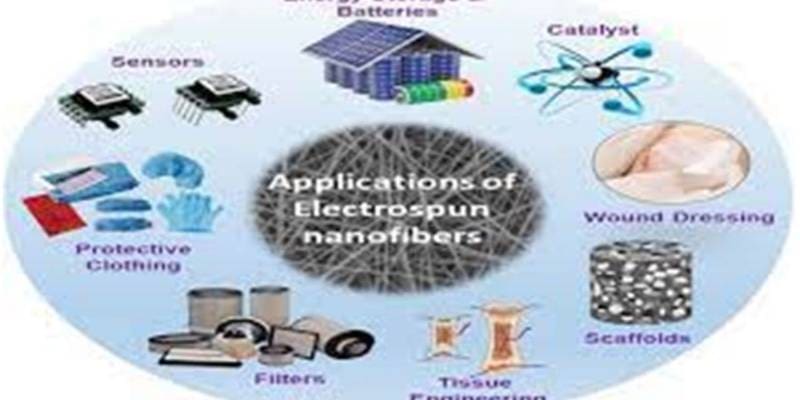Because of their extraordinary coupling of comparable base functionalities with foldability and stretchability, wearable and adaptable gadgets are a momentum focal point of exploration. Adaptable energy stockpiling gadgets are fit for changing or putting away energy when bowed, collapsed or extended over and again, and without huge decrease in productivity. Nanoparticles might be utilized to instill textures with explicit capacities without influencing the substrate’s solace characteristics. Materials are a decent substrate for the joining of nanomaterials, optical gadgets and hardware since they have a worldwide interface.Solving the difficulties in e-materials
The guarantee for creating adaptable, light-weight and comparable electronic parts for material products is immense, and it opens open doors for electronic-based detecting and energy gadgets to be integrated into or implanted into cotton-based substrates. In wearable/adaptable gadgets, nanostructured savvy materials should meet appearance, execution and weight necessities. Be that as it may, customary method for functionalizing materials don’t bring about long-lasting impacts, representing a trouble in the material business. For example, washing e-material based garments diminishes the expected useful impacts that have been given. Nanotechnology offers extension to assist textures with acquiring new and long-lasting usefulness. The ideal characteristics can be gotten through nanotechnology without affecting the breathability or surface of materials.
The principal issue in electronic materials is to embed the necessary usefulness component into the textures while keeping up with the characteristics of the two sections. By standard, two mathematical attributes, size and shape significantly affect extraordinary compound/actual qualities, especially at the nanometer scale. Single-layered (1D) materials like nanorods, nanobelts, nanowires, nanofibers and nanomaterials can work like an electron expressway in the pivotal direction, further developing transporter gathering and shortening the transporter transport course. Moreover, 1D nanostructures offer exceptional mechanical attributes, which are important for nuclear scale adjustment and control. Additionally, 1-D nanomaterials can blend in with numerous inorganic substances on a superficial level, as it is exceptionally wide.
Wearable gadgets are planned to be enduring, lightweight and adaptable, properties inseparable from fiber-based development. A few fiber models have been created utilizing minimal expense and deep rooted material handling techniques, and because of their various leveled nature, these sinewy materials are great for manufacturing wearable hardware.
The productivity of batteries, supercapacitors and sun oriented cells is reliant upon the materials utilized as well as the way of assembling. Creating the charge, shipping and gathering it, as well as scattering are all important for the energy transformation and capacity process. By filling in as an electron expressway in the hub course, electrospunnanofibers can lessen the transporter transportation distance and further develop the transporter assortment capacities. Minimal expense, high unambiguous surface region, optical straightforwardness and predominant mechanical strength/adaptability are likewise exceptional highlights of nanofibers, and conductive nanofibers have fair electrical conductivity. Such materials have a ton of guarantee for use in people in the future of energy stockpiling and change gadgets on account of their straightforwardness, high energy/power thickness, adaptability and portability.

